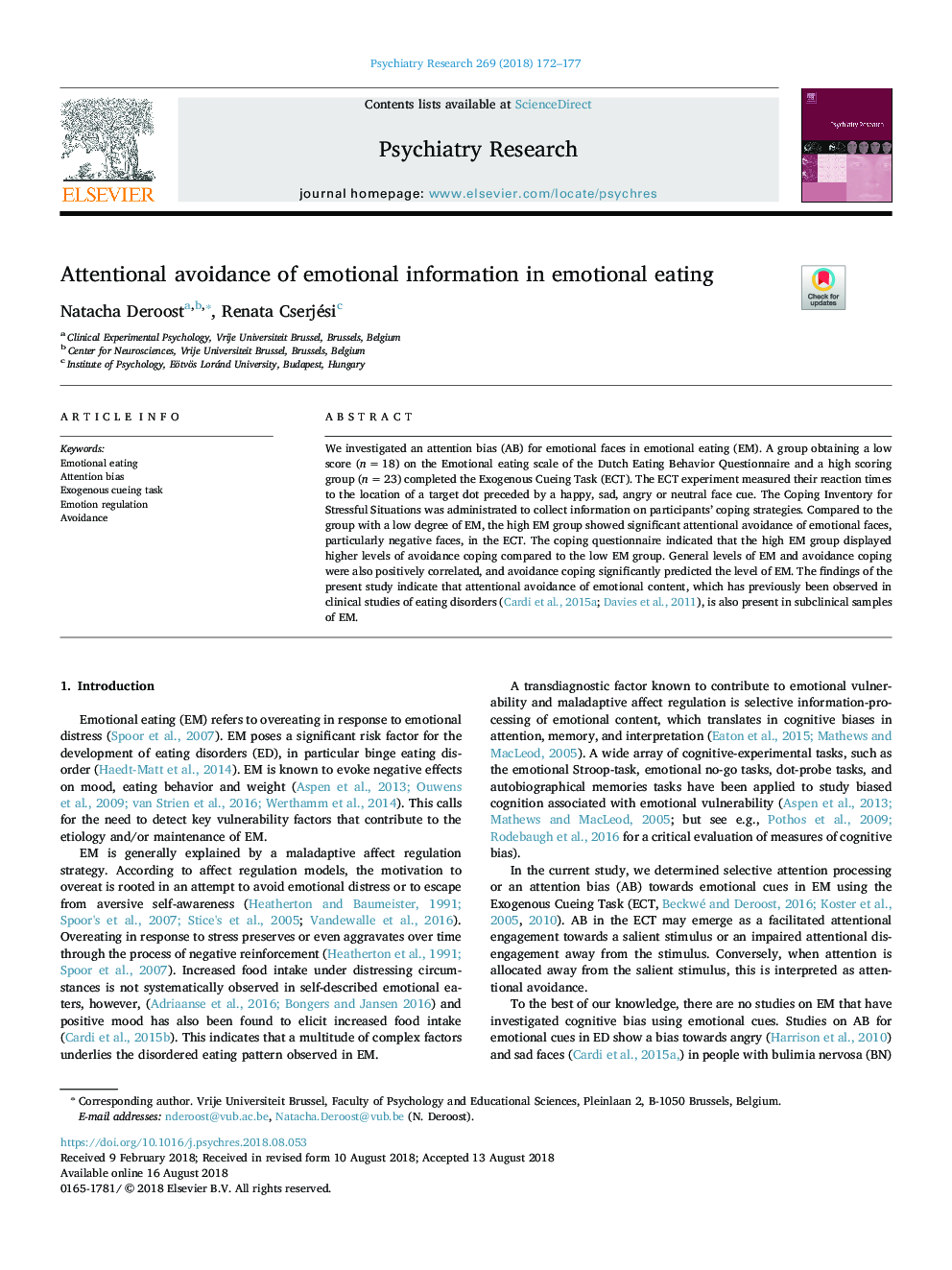| Article ID | Journal | Published Year | Pages | File Type |
|---|---|---|---|---|
| 8947251 | Psychiatry Research | 2018 | 6 Pages |
Abstract
We investigated an attention bias (AB) for emotional faces in emotional eating (EM). A group obtaining a low score (nâ¯=â¯18) on the Emotional eating scale of the Dutch Eating Behavior Questionnaire and a high scoring group (nâ¯=â¯23) completed the Exogenous Cueing Task (ECT). The ECT experiment measured their reaction times to the location of a target dot preceded by a happy, sad, angry or neutral face cue. The Coping Inventory for Stressful Situations was administrated to collect information on participants' coping strategies. Compared to the group with a low degree of EM, the high EM group showed significant attentional avoidance of emotional faces, particularly negative faces, in the ECT. The coping questionnaire indicated that the high EM group displayed higher levels of avoidance coping compared to the low EM group. General levels of EM and avoidance coping were also positively correlated, and avoidance coping significantly predicted the level of EM. The findings of the present study indicate that attentional avoidance of emotional content, which has previously been observed in clinical studies of eating disorders (Cardi et al., 2015a; Davies et al., 2011), is also present in subclinical samples of EM.
Related Topics
Life Sciences
Neuroscience
Biological Psychiatry
Authors
Natacha Deroost, Renata Cserjési,
